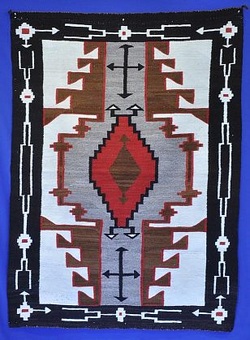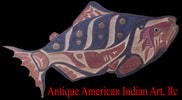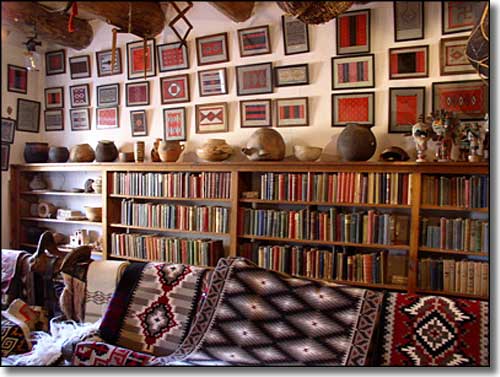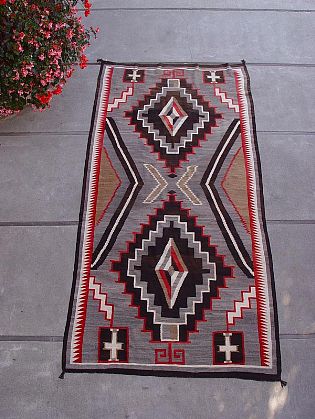Rug Era 1900-1940

By 1900 the Trading Post system was well-established. The Navajo, who had woven blankets throughout the 19th century, responded to the new economic system that the trading posts created. Encouraged by the traders to weave rugs for the new Anglo market, instead of blankets for the native market, Navajo weavers transitioned from making shoulder garments to floor rugs. These floor rugs were larger, heavier pieces, with central design elements and defined borders, and replaced the smaller banded or open format blankets.
With 30 years of development, the Navajo rug became a prized item for the American market; the rug industry hit its high watermark between 1910-1930.
There was a convergence of many factors which made the 1910-1930 period an especially significant period in Navajo weaving history:
With 30 years of development, the Navajo rug became a prized item for the American market; the rug industry hit its high watermark between 1910-1930.
There was a convergence of many factors which made the 1910-1930 period an especially significant period in Navajo weaving history:
- The Navajo population had more than tripled since the end of the Indian War; from about 9,000 in 1868 to 20,500 in 1898 and then to 31,250 in 1918. (To note: In 2000 there were over 175,000 Navajo in the census).
- The sheep were healthy, the weather was good and forage was plentiful. High quality hand spun wool yarns are typical of this period.
|
The Rug Room at the Hubbell Trading Post in Ganado, Az. shows off the small paintings of rugs on the wall which were the favored rugs of Lorenzo Hubbell. These were used both to sell patterns to clients, and to direct weavers which rug to weave next.
|


